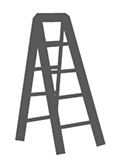FACE Fact Sheet: Prevent Construction Falls from Roofs, Ladders, and Scaffolds
-
Fatality Assessment and Control Evaluation (FACE) Program Reports
The National Institute for Occupational Safety and Health’s (NIOSH) Fatality Assessment and Control Evaluation (FACE) Program and State FACE Programs study fatal workplace injuries and prepare reports with recommendations to prevent similar injuries. The following are links to all of the items in this collection:
Documents
- Kentucky FACE Report: Commercial Roofer Falls 30 Feet Through a Skylight While Installing Roof Insulation
- Fatal Occupational Injuries in Massachusetts 2008-2013
- Fatality Assessment & Control Evaluation (FACE) Program
- Washington FACE Report: Glazier Foreman Falls From Stepladder
- Preventing Construction Falls Toolkit
- Hazard Alert: Pedestrian Workers Killed by Forklifts
- Keep Employees in Motor Vehicles Safe
- New York FACE Brochure
- Washington FACE Report: Construction Laborer Falls When Ladder Breaks
- Washington FACE Report: Pipelayer Dies when Trench Wall Collapses
- Washington FACE Report: Carpenter Falls 60 Feet from Bridge Concrete Form
- Washington FACE Report: Foreman and Laborer Fall when Aerial Lift Struck by Vehicle
- Washington FACE Report: Framer Falls 18 Feet while Sheathing Roof
- New York FACE Report: Mechanic Electrocuted when a Mobile Light Tower Contacted Powerline
- New York FACE Report: Two Construction Workers Fatally Crushed when Cement Formwork Collapsed
- Kentucky FACE Report: Construction Laborer Killed in Trench Collapse while Taking Grade Measurements
- California FACE Report: A Heating, Ventilaton and Air Conditioning (HVAC) Contractor Dies when He Falls through a Skylight
- Massachusetts FACE Report: Carpenter Fatally Injured after Falling from an Extension Ladder
- Massachusetts FACE Report: Laborer Fatally Injured after Falling from a Home under Construction
- Oregon FACE Report: Worker Falls When Ladder Slips
- Michigan FACE Information Sheet: Look for Mobile Equipment Blind Spots
- Oregon FACE Report: Collapsed roof trusses kill carpenter foreman
- Washington FACE Report: Roofer Falls 19 Feet from Roof
- Hazard Alert: Plan. Provide. Train. Prevent Fall Injuries & Deaths
- Kentucky FACE Report: 19-Year-Old Construction Laborer Crushed in Trench Collapse While Laying Sewage Pipe
- Kentucky FACE Report: Construction Flagger Struck and Killed in Two-Lane Highway Work Zone
- Kentucky FACE Report:Temporary Electrician Helper Steps into Unguarded Elevator Shaft and Dies
- Fatality Narrative: Roofing Contractor Falls 25 Feet From Church Roof
- Kentucky FACE Report: Construction Siding Subcontractor Installer Killed when Oversized Scaffolding Platform Destabilized and Telescopic Forklift Overturned
- NIOSH FACE Report - Maintenance Worker Struck by Forklift Carriage—Tennessee
- Kentucky Hazard Alert: Roofing and Construction Workers Killed Due to High Winds
- Poster: Secure it to move it!
- Oregon FACE Report: Crane Operator Killed By Falling Steel Beam
- New Jersey FACE Report: Mechanic Dies After Being Crushed Under Electrical Cabinet
- New Jersey FACE Report: Plant Manager Crushed to Death Under Fallen Pile of Steel Beams
- NIOSH FACE Report: Hispanic worker falls from residential roof
- Oregon FACE Report: Construction worker died after falling 20-25 feet from a pump-jack scaffold
- FACE Fact Sheet: Prevent Construction Falls from Roofs, Ladders, and Scaffolds
- Construction Fatality Narrative: Roofer Falls 18 Feet from Wet House Roof
- Construction Worker Killed when Trench Collapsed, Oregon
- A Tree Trimmer is Electrocuted While Trimming a Palm Tree
- A Tree Feller Dies When Struck By a Tree Limb While Felling a Fire-Damaged Tree
- Concrete Finisher Electrocuted When Bull Float Contacted an Energized Power Line
- Warehouse Worker Crushed by Forks of Laser Guided Vehicle
Summary Statement
Falls are the leading cause of construction worker deaths on the job.1 This fact sheet gives recommendations,
reports, and resources to help employers, safety professionals, and workers prevent fall injuries and
deaths from roofs, ladders, and scaffolds.
April 2019

Each year in the
U.S. more than 310
construction
workers are killed
and more than
10,350 are seriously
injured by falls from
heights.1,2
Roofs |
Ladders |
Scaffolds |
|---|---|---|
 |
 |
 |
| 124 deaths in 20162 | 104 deaths in 20162 | 60 deaths in 20162 |
| Recommendations FACE Reports Resources |
Recommendations FACE Reports Resources |
Recommendations FACE Reports Resources |
Roof Falls in Construction

81% of deaths
from roofs
occur in the
construction
industry2
Some factors that contribute to falls from roofs:
- Worker inexperience or lack of training
- No fall protection program or a personal fall arrest system
- No personal fall protection used
- Incorrect fall arrest system anchorage method
- Lack of fall arrest system lanyard connection point
- Incorrect working length of fall arrest system lifeline
- Working alone when working at elevations
- Working during inclement weather (e.g., wind, rain)
Some recommendations to prevent falls from roofs:
- Implement a fall protection program
- Wear fall protection, and use correctly
- Get training on fall protection
- Train and assign a person to inspect fall protection equipment before each use
- Use correct anchorage for fall arrest systems
- Extend the side rails of the ladder 3 feet above the roof edge
- Use a buddy system when working at heights
- Monitor weather conditions
Read some of our FACE reports on roof falls:
Roofer Dies After Gust Of Wind Knocks Him and Co-Worker Off Roof – Kentucky (Report #13KY059)
A roofer and a co-worker arrived at the construction site to put a roof on a building. The roofer and co-worker climbed an extension ladder to get on top of the roof to determine where they were going to place their anchors to tie off. While reviewing the structure, a gust of wind caused both workers to fall off the roof, and one roofer died.
Hispanic Worker Falls From Residential Roof – North Carolina (Report NIOSH FACE #2012-02)
A laborer fell from a residential roof to a concrete driveway and died from his injuries. The laborer was replacing shingles on a roof. While working on the roof, he was wearing his fall protection incorrectly
For more reports on falls from roofs, visit: www.cdc.gov/niosh/face/

Ladder Falls in Construction

57% of deaths
from ladders
occur in the
construction
industry2
Some factors that contribute to ladder falls:
- Worker inexperience or lack of training
- Improper ladder selection
- Improper use of a ladder
- Ladder overloading
- Ladder not set up on a flat, level surface or at a proper angle
- Not extending the ladder above the roof line
- Lack of safe access
Some recommendations to prevent ladder falls:
- Get training on how to properly use ladders
- Choose the right ladder for the job
- Inspect ladders regularly and ensure they are in good working order
- Use ladder on flat and level ground
- Secure and position the ladder in the safest location possible
- Extend the side rails of the ladder 3 feet above the roof edge
- Face the ladder at all times when climbing
- Maintain 3 points of contact with the ladder at all times
- Don’t overload a ladder
- Use the NIOSH Ladder Safety App to set proper ladder angle
Read some of our FACE reports on ladder falls:
Carpenter Injured After Falling From An Extension Ladder (Report #15MA037)
A carpenter was killed after falling from an extension ladder. The carpenter and a co-worker were onsite to do gutter work on a house. The carpenter was climbing an extension ladder that was set up on stone pavers to access the roof. While climbing the ladder, he fell when the ladder slipped out from under him. The carpenter died 16 days later.
Hispanic Worker Dies After Fall From Step Ladder While Cleaning Windows – North Carolina (Report NIOSH FACE #2009-01)
A worker died after a fall from an 8-foot step ladder. A bucket partially filled with a cleaning solution was tied with a rag to the top of the ladder. The worker was on a ladder cleaning windows. While cleaning, he did not maintain 3 points of contact with the ladder and he fell and hit his head.
For more reports on ladder falls, visit: www.cdc.gov/niosh/face/

Scaffold Falls in Construction

86% of deaths
from scaffolds
occur in the
construction
industry2
Some factors that contribute to scaffold falls:
- No fall protection program
- Worker inexperience or lack of training
- Workers not trained to identify, understand, and control fall hazards
- Lack of fall protection or fall arrest system
- Unstable work surface
- Improper scaffold construction, selection, or use
- No use of guardrails
- Wheels are unlocked before mounting the work platform
- Working alone from heights during off hours
Some recommendations to prevent scaffold falls:
- Train and assign a person to supervise scaffold setup
- Place on stable ground/surface
- Set up scaffolds per the manufacturer guidelines and Occupational Safety and Health Administration standards
- Use guardrails or a fall arrest system when more than 10 feet above a lower level
- Inspect scaffolds and scaffold parts before each use
- Ensure scaffolds are fully planked
- Secure scaffold (e.g., lock wheels on mobile scaffolds)
- Provide proper scaffold access
Read some of our FACE reports on scaffold falls:
Municipal Lead Custodian Dies In Fall From Mobile Scaffolding (Report #11MA008)
A municipal custodian died while painting the inside of a school lobby. The custodian went to the school alone to finish painting. The custodian was on a mobile scaffold that was improperly set up, and he fell onto the lobby floor.
Construction Worker Died After Falling 20-25 Feet From a Pump-jack Scaffold (Report #15OR12)
An owner of a residential siding company sustained injuries when he fell from a pump-jack scaffold platform onto a concrete slab. While working on the scaffold, the owner was not wearing fall protection. The owner died the following day.
For more reports on scaffold falls, visit: www.cdc.gov/niosh/face/
Resources
Use these resources to prevent falls and keep construction workers safe on the job.
Construction Falls Resources
NIOSH Construction Program (https://www.cdc.gov/niosh/programs/const/) This website provides program goals and resources.
NIOSH FACE Program (https://www.cdc.gov/niosh/face/) This website provides NIOSH FACE and State FACE reports.
NIOSH Falls in the Workplace (https://www.cdc.gov/niosh/topics/falls/) This website provides information about projects and resources available to prevent work-related falls.
NIOSH FACE Program: A Five Year Look-Back(https://www.youtube.com/watch?v=OONUcRmoaQQ) This video highlights the NIOSH FACE Program and the role the FACE states have in promoting the National Campaign to Prevent Falls in Construction.
Ladder Resources
NIOSH Ladder Safety App (https://www.cdc.gov/niosh/topics/falls/mobileapp.html) Download and use the free NIOSH Ladder Safety app to prevent extension and step-ladder fall injuries and deaths.
Ladder Safety: There’s an App for That (http://blogs.cdc.gov/niosh-science-blog/2013/08/27/laddersafety/) This NIOSH Science Blog shares information about development of the app and its use among workers.
Stop Construction Falls Campaign Websites and Materials
Campaign Websites
https://stopconstructionfalls.com/
https://www.cdc.gov/niosh/construction/stopfalls.html
https://www.osha.gov/stopfalls/
Get information to prevent falls and participate in the National Safety Stand-Down event.
Fall Prevention Fact Sheet
https://www.cdc.gov/niosh/docs/2012-142/pdfs/2012-142.pdf
This fact sheet provides information to PLAN ahead to get the job done safely. PROVIDE the right equipment. TRAIN everyone to use the equipment safely.
About the FACE Program
 The National Institute for Occupational Safety and Health’s (NIOSH) Fatality Assessment and Control Evaluation (FACE) Program, along with its State FACE partners, study fatal workplace injuries and prepare reports with recommendations to prevent similar deaths. This national research program aims to prevent job-related injuries and deaths by: Investigating select deaths Identifying hazards Developing workplace prevention recommendations Sharing recommendations with employers, safety professionals, and workers
The National Institute for Occupational Safety and Health’s (NIOSH) Fatality Assessment and Control Evaluation (FACE) Program, along with its State FACE partners, study fatal workplace injuries and prepare reports with recommendations to prevent similar deaths. This national research program aims to prevent job-related injuries and deaths by: Investigating select deaths Identifying hazards Developing workplace prevention recommendations Sharing recommendations with employers, safety professionals, and workers
See our Fatality Assessment and Control Evaluation (FACE) Program flyer for more information.
References
¹ US Department of Labor, Bureau of Labor Statistics Occupational Injuries/Illnesses and Fatal Injuries Profiles-Case and Demographic Numbers. Date accessed: November 14, 2018. https://data.bls.gov/gqt/InitialPage
² US Department of Labor, Bureau of Labor Statistics Occupational Injuries/Illnesses and Fatal Injuries Profiles-Fatal Injuries Numbers. Date accessed: April 6, 2018. https://data.bls.gov/gqt/InitialPage
 Acknowledgments: The NIOSH FACE Program thanks the KY FACE, MA FACE, and OR FACE programs for their investigation reports that are highlighted in this fact sheet.
Acknowledgments: The NIOSH FACE Program thanks the KY FACE, MA FACE, and OR FACE programs for their investigation reports that are highlighted in this fact sheet.
Mention of any company or product does not constitute endorsement by the National Institute for Occupational Safety and Health, Centers for Disease Control and Prevention. In addition, citations to websites external to NIOSH do not constitute NIOSH endorsement of the sponsoring organizations or their programs or products. Furthermore, NIOSH is not responsible for the content of these websites. All web addresses referenced in this document were accessible as of the publication date.
DHHS (NIOSH) Publication No. 2019-128 https://doi.org/10.26616/NIOSHPUB2019128
April 2019





